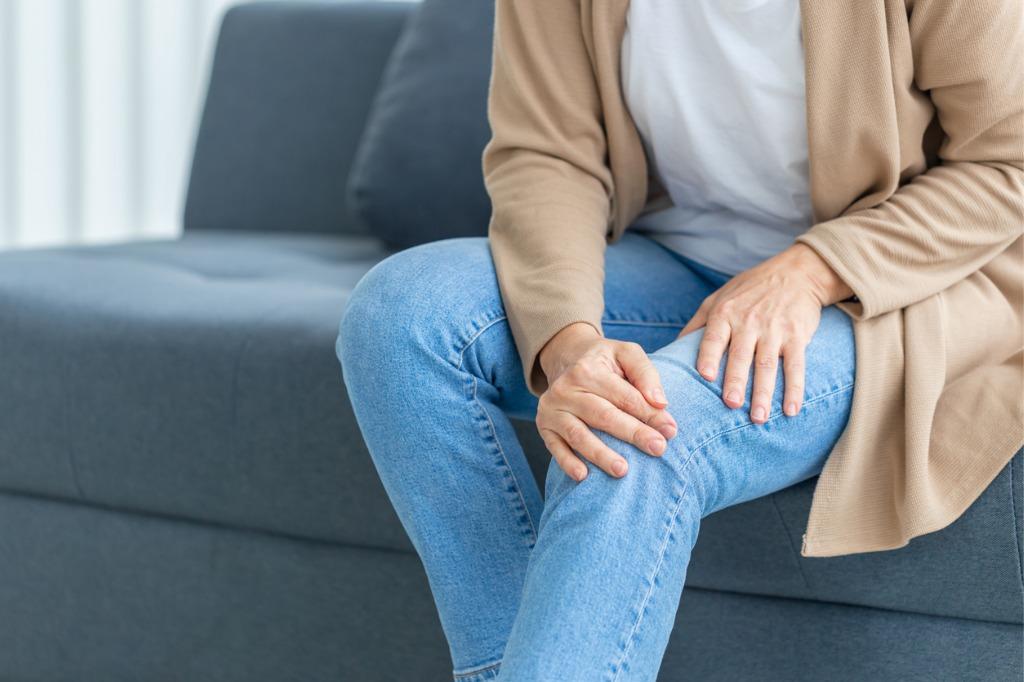Inner Knee Pain: Causes and Treatment Options

The knee is the largest joint in the body and is essential for movement and weight-bearing. This joint consists of three bones – the tibia, femur, and patella – which form a hinge to provide mobility. However, due to the complexity of the knee joint, it is prone to injuries and is a common source of pain for people of all ages. The inner knee is particularly vulnerable to pain and may lead to further complications if left untreated.
4 Common Causes of Inner Knee Pain
Inner knee pain may make everyday activities such as walking, standing, and climbing stairs difficult and painful. Understanding the common causes of knee pain is important for proper diagnosis and effective treatment. At Motion Orthopaedics, we will provide you with a thorough examination and help you determine if any of the following common conditions apply to you.
1. Osteoarthritis
Osteoarthritis is a common cause of inner knee pain, particularly in older adults. It is a chronic degenerative joint condition that results from the gradual wear and tear of the cartilage that cushions the knee joint. As the cartilage breaks down over time, the bones in the joint may begin to rub against each other, which can cause pain, stiffness, and inflammation.
In the case of inner knee pain, osteoarthritis often affects the medial compartment of the knee, which is the area on the inside of the knee joint. This may cause pain and tenderness in the inner knee, as well as a feeling of stiffness or tightness in the joint. When the medial joint space begins to narrow, it is often a telltale sign of osteoarthritis.
2. Medial Collateral Ligament Injury
The medial collateral ligament (MCL) is one of the four primary ligaments in the knee. It connects the thigh bone to the shinbone and helps keep the tibia in place. If you notice the inner side of your knee feels tender or unstable, you may have torn or sprained your MCL. The time it takes to recover from an MCL injury depends on the severity of the injury, but it typically takes around six weeks following proper treatment.
3. Medial Meniscus Tear
The meniscus is a C-shaped piece of cartilage that acts as a cushion and shock absorber between the thigh bone (femur) and the shin bone (tibia). A medial meniscus tear is a type of knee injury that affects the cartilage on the inner side of the knee joint. This type of tear is usually due to a sudden twisting or rotation of the knee or as a result of wear and tear over time.
Treatment for a medial meniscus tear depends on the severity of the injury and the individual’s health, lifestyle and goals.
4. Pes Anserine Bursitis
Pes anserine bursitis is a condition that involves inflammation of the bursa located on the inner side of the knee, just below the joint. The pes anserine bursa is a small fluid-filled sac that provides cushioning and reduces friction between the tendons of the hamstring muscles and the tibia bone. Pes anserine bursitis may be caused by overuse, trauma, or repetitive motions that irritate the bursa.
People who engage in activities that involve running, jumping, or twisting are more prone to developing pes anserine bursitis. Other contributing factors may include obesity, knee osteoarthritis, or tightness in the hamstrings. Symptoms of pes anserine bursitis may consist of pain and tenderness on the inner side of the knee, swelling, and stiffness. The pain may be aggravated by activities such as climbing stairs or standing up from a seated position. In some cases, the pain may radiate to other parts of the leg, such as the thigh or calf.
Conservative Treatment Options for Inner Knee Pain
When treating knee injuries, conservative treatment options can often be effective in relieving pain, reducing inflammation, and promoting healing.
Sports Medicine
Sports medicine is a specialized field that focuses on preventing and treating injuries related to physical activity and sports. Physical therapy and knee immobilization are important components of sports medicine, as they help athletes recover from injuries and prevent future ones. At Motion Orthopaedics, we offer a wide range of sports medicine services, including diagnosing, treating, and rehabilitating sports injuries.
Our team of experienced physicians can help athletes of all levels get back to doing what they love. If you’re experiencing inner knee pain or other symptoms related to a sports injury, Motion Orthopaedics can help you recover and optimize your performance.
Surgical Treatment Options
Although conservative treatments such as physical therapy and knee immobilization can be effective, surgical treatment may be recommended in severe cases. Depending on the severity of the injury or condition, surgery may be the best option for achieving optimal results. At Motion Orthopaedics, our team of orthopedic surgeons is experienced in treating a wide range of conditions, including inner knee pain. The following are some of the surgical treatments for inner knee pain.
Arthroscopy
Arthroscopy is a minimally invasive surgical technique that involves the insertion of a small camera, called an arthroscope, into the joint through a small incision. This allows the surgeon to visualize the inside of the joint and make any necessary repairs or corrections. Arthroscopy can be a useful tool in diagnosing and treating inner knee pain. This procedure can be used to identify and repair meniscus tears, remove loose fragments of cartilage or bone, and repair ligament damage. Arthroscopy can often be performed on an outpatient basis, with a relatively short recovery time compared to traditional open surgery.
Ligament Reconstruction
Ligament reconstruction is a surgical procedure that involves replacing a torn or damaged ligament with a graft from another part of the body or a donor. If the pain in your inner knee is due to one of the four major ligaments, such as the ACL or MCL, your doctor may recommend ligament reconstruction. This procedure may restore stability in the joint and decrease pain by preventing further damage.
Cartilage Repair
Cartilage repair is a treatment option that aims to restore damaged cartilage in the knee joint. The cartilage in the knee joint is a smooth, rubbery tissue that cushions the bones and allows them to move freely. When the cartilage is damaged due to injury or wear and tear, it may lead to pain, swelling, and reduced mobility. Cartilage repair procedures may effectively restore function and reduce pain for individuals with cartilage damage in the knee joint.
Receive Exceptional Care at Motion Orthopaedics
Motion Orthopaedics specializes in helping people of all ages and activity levels recover from knee injuries and improve their quality of life. Our experienced physicians and sports medicine specialists provide personalized care, using the latest techniques and technology to diagnose, treat, and rehabilitate knee injuries. Don’t let inner knee pain or an injury hold you back any longer. Book an appointment with Motion Orthopaedics today and receive the exceptional care you deserve.




